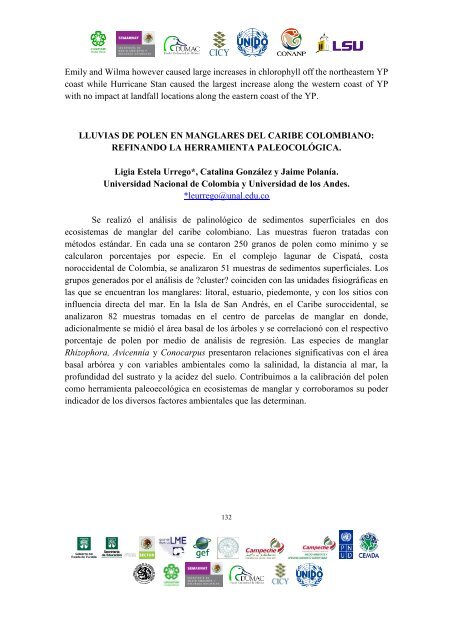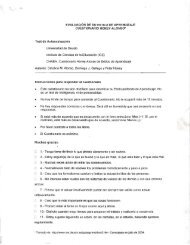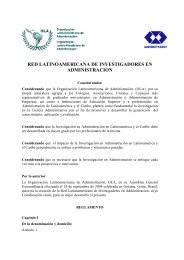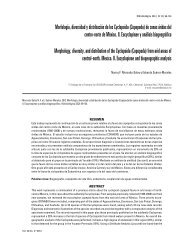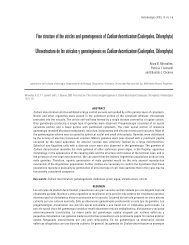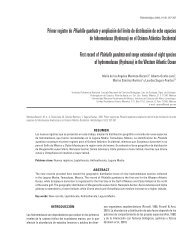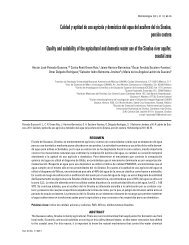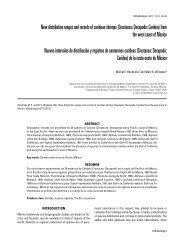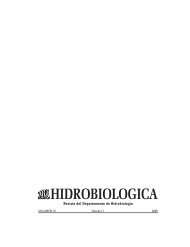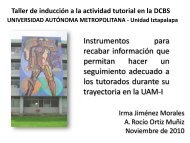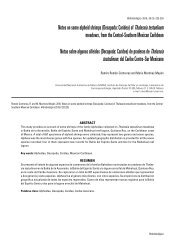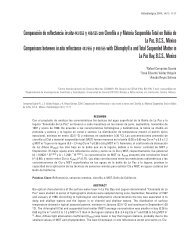Manglares - Páginas de Investigación, UAM Iztapalapa
Manglares - Páginas de Investigación, UAM Iztapalapa
Manglares - Páginas de Investigación, UAM Iztapalapa
- No tags were found...
You also want an ePaper? Increase the reach of your titles
YUMPU automatically turns print PDFs into web optimized ePapers that Google loves.
Emily and Wilma however caused large increases in chlorophyll off the northeastern YPcoast while Hurricane Stan caused the largest increase along the western coast of YPwith no impact at landfall locations along the eastern coast of the YP.LLUVIAS DE POLEN EN MANGLARES DEL CARIBE COLOMBIANO:REFINANDO LA HERRAMIENTA PALEOCOLÓGICA.Ligia Estela Urrego*, Catalina González y Jaime Polanía.Universidad Nacional <strong>de</strong> Colombia y Universidad <strong>de</strong> los An<strong>de</strong>s.*leurrego@unal.edu.coSe realizó el análisis <strong>de</strong> palinológico <strong>de</strong> sedimentos superficiales en dosecosistemas <strong>de</strong> manglar <strong>de</strong>l caribe colombiano. Las muestras fueron tratadas conmétodos estándar. En cada una se contaron 250 granos <strong>de</strong> polen como mínimo y secalcularon porcentajes por especie. En el complejo lagunar <strong>de</strong> Cispatá, costanorocci<strong>de</strong>ntal <strong>de</strong> Colombia, se analizaron 51 muestras <strong>de</strong> sedimentos superficiales. Losgrupos generados por el análisis <strong>de</strong> ?cluster? coinci<strong>de</strong>n con las unida<strong>de</strong>s fisiográficas enlas que se encuentran los manglares: litoral, estuario, pie<strong>de</strong>monte, y con los sitios coninfluencia directa <strong>de</strong>l mar. En la Isla <strong>de</strong> San Andrés, en el Caribe surocci<strong>de</strong>ntal, seanalizaron 82 muestras tomadas en el centro <strong>de</strong> parcelas <strong>de</strong> manglar en don<strong>de</strong>,adicionalmente se midió el área basal <strong>de</strong> los árboles y se correlacionó con el respectivoporcentaje <strong>de</strong> polen por medio <strong>de</strong> análisis <strong>de</strong> regresión. Las especies <strong>de</strong> manglarRhizophora, Avicennia y Conocarpus presentaron relaciones significativas con el áreabasal arbórea y con variables ambientales como la salinidad, la distancia al mar, laprofundidad <strong>de</strong>l sustrato y la aci<strong>de</strong>z <strong>de</strong>l suelo. Contribuimos a la calibración <strong>de</strong>l polencomo herramienta paleoecológica en ecosistemas <strong>de</strong> manglar y corroboramos su po<strong>de</strong>rindicador <strong>de</strong> los diversos factores ambientales que las <strong>de</strong>terminan.132


